
|
You entered: Solar System
 The Case of the Backwards Orbiting Asteroid
The Case of the Backwards Orbiting Asteroid
29.05.2018
Why does asteroid 2015 BZ509 orbit the Sun the backwards? As shown in the featured animation, Jupiter's trojan asteroids orbit the Sun in two major groups -- one just ahead of Jupiter, and one just behind -- but all orbit the Sun in the same direction as Jupiter.
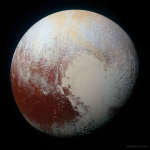 Pluto in Enhanced Color
Pluto in Enhanced Color
31.07.2021
Pluto is more colorful than we can see. Color data and high-resolution images of our Solar System's most famous dwarf planet, taken by the robotic New Horizons spacecraft during its flyby in 2015 July, have been digitally combined to give an enhanced-color view of this ancient world sporting an unexpectedly young surface.
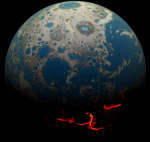 Four Billion BCE: Battered Earth
Four Billion BCE: Battered Earth
5.08.2014
No place on Earth was safe. Four billion years ago, during the Hadean eon, our Solar System was a dangerous shooting gallery of large and dangerous rocks and ice chunks. Recent examination of lunar...
 PanSTARRS: The Anti Tail Comet
PanSTARRS: The Anti Tail Comet
29.06.2013
Once known as Earth's sunset comet, PanSTARRS (C/2011 L4) is up all night now, but only for northern hemisphere skygazers. Telescopes are required to track its progress as it fades and heads for the outer solar system.
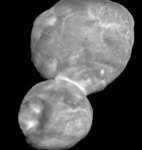 Passing Asteroid Arrokoth
Passing Asteroid Arrokoth
17.11.2019
What would it look like to pass asteroid Arrokoth? The robotic New Horizons spacecraft zoomed past Arrokoth in January, 3.5 years after the spacecraft passed Pluto. If this object's name doesn't sound...
 APOD: 2023 June 13 Б Moons Across Jupiter
APOD: 2023 June 13 Б Moons Across Jupiter
12.06.2023
Jupiter's moons circle Jupiter. The featured video depicts Europa and Io, two of Jupiter's largest moons, crossing in front of the grand planet's Great Red Spot, the largest known storm system in our Solar System.
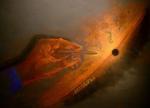 Hand Drawn Transit
Hand Drawn Transit
16.11.2006
The sight of Mercury's tiny round disk drifting slowly across the face of the Sun inspired and entertained many denizens of planet Earth last week. In fact, artist and astronomer Mark Seibold viewed...
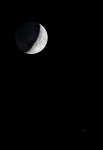 Jupiter and the Moons
Jupiter and the Moons
4.10.2019
After sunset on October 3, some of the Solar System's largest moons stood low along the western horizon with the largest planet. Just after nightfall, a pairing of the Moon approaching first quarter phase and Jupiter was captured in this telephoto field of view.
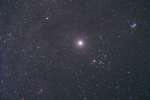 Bright Jupiter in Taurus
Bright Jupiter in Taurus
27.11.2012
That bright star you've recently noticed rising just after sunset isn't a star at all. It's Jupiter, the solar system's ruling gas giant. Bright Jupiter is nearing its December 3rd opposition when it will stand in Taurus, opposite the Sun in planet Earth's sky.
 A Radar View of Titan
A Radar View of Titan
23.11.2004
Where are Titan's craters? Throughout our Solar System's five billion-year history, dangerous rocks and chunks of ice have continually slammed into planets and moons - usually creating numerous long lasting impact craters. When the robot spacecraft Cassini swooped past Saturn's moon Titan last month, however, radar images showed few craters.
|
January February March April May June July |
|||||||||||||||||||||||||||||||||||||||||||||||||